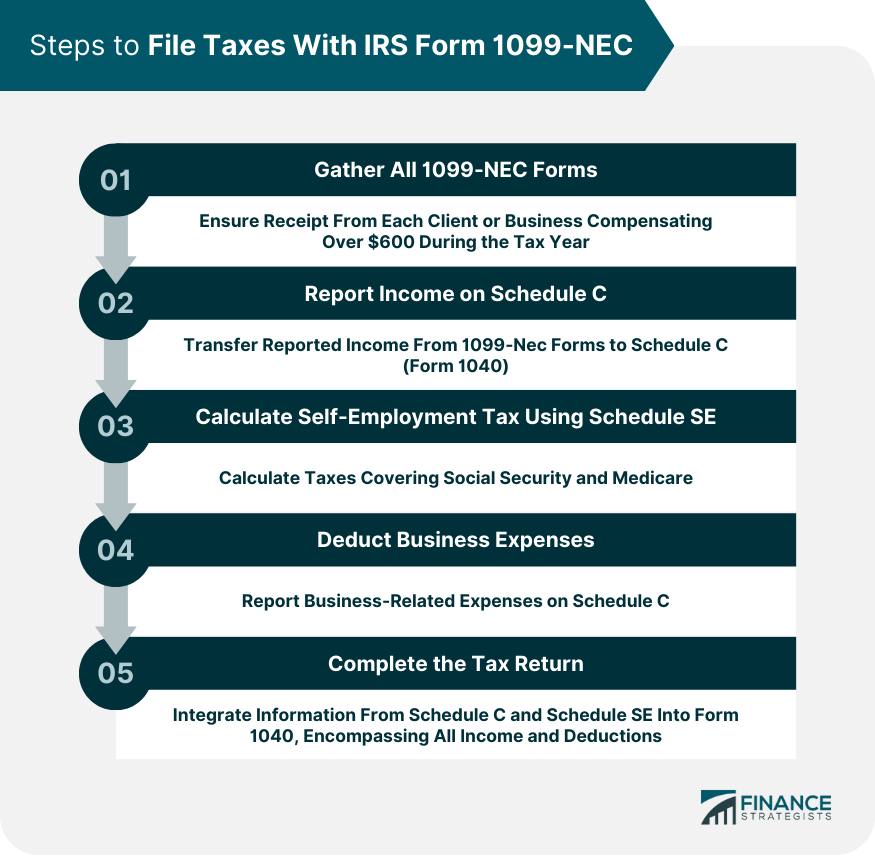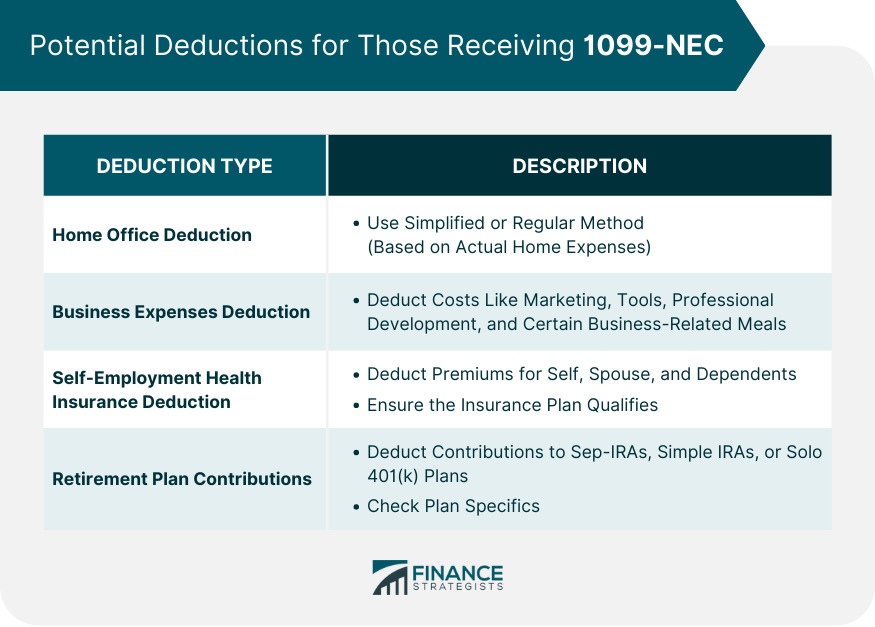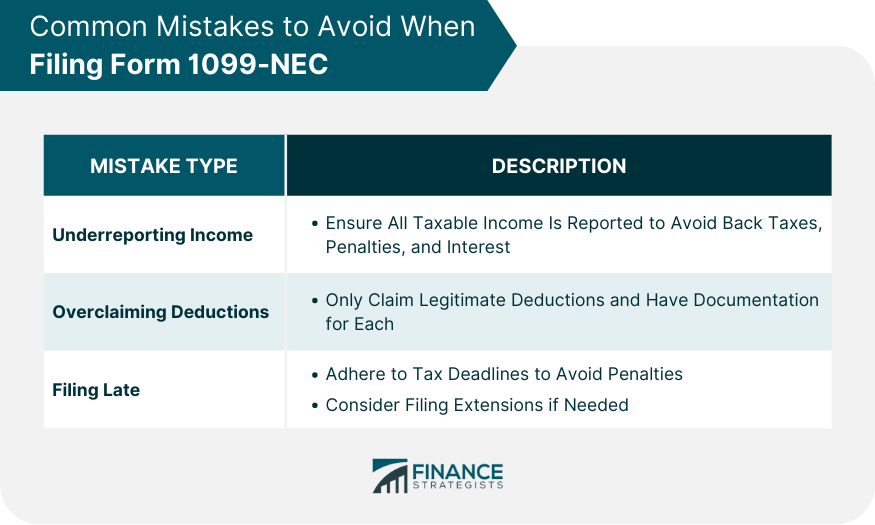The IRS Form 1099-NEC is a crucial document for many independent contractors, freelancers, and self-employed professionals in the U.S. It serves as an official record of non-employee compensation received during a tax year. Distinct from other 1099 forms, the 1099-NEC specifically focuses on payments to non-employees. In the past, Form 1099-MISC was used, but with evolving financial landscapes, the need for a separate, dedicated form became apparent. The pivotal players in the world of 1099-NEC are independent contractors. This title often encompasses freelancers, consultants, and other professionals who provide services but are not considered regular employees. A rule of thumb is that businesses issue this form to any individual or entity they've paid $600 or more during the tax year for services rendered outside of employee-employer relationships. It's worth noting that if a company hires a corporation for a service, generally, they are exempt from receiving a 1099-NEC. As the tax season approaches, it's vital to ensure you've received a 1099-NEC from each client or business that compensated you over $600 in the tax year. Collecting these forms is the foundation of accurate tax filing for independent contractors. If you believe you should've received a form but haven't, it's essential to contact the client or business promptly. Remember, it's your responsibility to report all your income, even if you don't receive a 1099-NEC for smaller amounts. Once all your forms are in order, the income reported on them should be transferred to Schedule C (Form 1040). This schedule allows you to report profit or loss from your business endeavors. It's imperative to be meticulous in reporting all your income to prevent potential issues with the IRS later on. Self-employed individuals have a unique tax scenario, often culminating in paying self-employment tax. This tax covers Social Security and Medicare. Schedule SE aids in calculating this amount. Operating independently often incurs various business-related expenses. Schedule C is also the place to report these deductions. Deductible expenses might include office supplies, advertising costs, or even specific travel expenses. However, it's crucial to ensure each claimed expense is genuinely business-related and substantiated with proper documentation. With the data from Schedule C and Schedule SE at hand, you can integrate this information into your broader tax return. For most, this means filling out Form 1040. Make sure to encompass all sources of income and deductions to ensure an accurate return. For many freelancers and independent contractors, their home doubles as their office. The IRS recognizes this and often allows for a home office deduction. However, specific criteria must be met. Primarily, the space must be exclusively and regularly used for business. There are two methods to calculate this deduction: the simplified method. Almost every business incurs operational expenses. For self-employed individuals, these can be deducted to offset income. Potential deductible expenses range from marketing costs, tools or equipment for the job, professional development expenses, and even certain meals and entertainment costs linked directly to business endeavors. Self-employed professionals often face the challenge of securing health insurance outside of traditional employment. The silver lining is that they can often deduct premiums paid for themselves, their spouses, and dependents. This can be a substantial deduction, but it's essential to ensure the insurance plan qualifies under IRS guidelines. Planning for the future is crucial, even for the self-employed. Fortunately, contributions to PB SEP-IRAs, SIMPLE IRAs, or solo 401(k) plans can often be deducted, reducing taxable income. Familiarizing oneself with the specifics of each plan and their contribution limits can pave the way for both secure retirement and tax-time advantages. Perhaps the most common pitfall is not reporting all taxable income. Whether unintentional or deliberate, the IRS has ways of uncovering discrepancies. Not only can this oversight result in owing back taxes, but it can also lead to penalties and interest. It's just as crucial to avoid claiming deductions that aren't legitimate. While the allure of reducing taxable income is strong, it's essential to have documentation for every deduction, ensuring each one is both genuine and permissible under IRS guidelines. Tax deadlines is not a mere suggestion. Filing late can trigger penalties and interest, adding unnecessary costs. If you anticipate challenges in meeting the deadline, consider filing for an extension, but be aware that this doesn't extend the time to pay any taxes owed. The complexities of tax codes, especially for those navigating the 1099-NEC landscape, can be daunting. Seeking guidance from tax professionals or CPAs can ensure accurate filing, optimized deductions, and peace of mind. Many software solutions also offer tailored advice for independent contractors, melding technology with expert insights. Navigating the intricacies of IRS Form 1099-NEC is paramount for independent contractors, freelancers, and self-employed professionals. Serving as an indisputable record of non-employee compensation, it distinctly separates payments to these individuals from regular employment. Essential steps, such as gathering all 1099-NEC forms, diligently reporting income on Schedule C, and calculating self-employment tax, lay the foundation for accurate tax filing. Moreover, leveraging potential deductions, be it the home office, business expenses, or health insurance premiums, can significantly benefit tax-time outcomes. However, vigilance is necessary to avoid pitfalls like underreporting income or overclaiming deductions. As tax complexities often loom large, seeking guidance from professionals or leveraging tailored software solutions can be invaluable. In essence, understanding and correctly utilizing the 1099-NEC ensures compliance, optimized deductions, and a smoother tax experience.What is IRS Form 1099-NEC?
Who Receives IRS Form 1099-NEC?
Steps to File Taxes With IRS Form 1099-NEC
Gather All Your 1099-NEC Forms
Report Your Income on Schedule C
Calculate Self-Employment Tax Using Schedule SE
Deduct Business Expenses
Complete Your Tax Return

Potential Deductions for Those Receiving 1099-NEC
Home Office Deduction
Business Expenses Deduction
Self-Employment Health Insurance Deduction
Retirement Plan Contributions

Common Mistakes to Avoid When Filing With Form 1099-NEC
Underreporting Income
Overclaiming Deductions
Filing Late

Seeking Professional Assistance
Conclusion
How to File Taxes With IRS Form 1099-NEC FAQs
The IRS Form 1099-NEC serves as an official record for non-employee compensation received during a tax year, primarily used by independent contractors and freelancers.
Independent contractors, freelancers, and self-employed professionals who have earned $600 or more from a single client or company during the tax year typically receive the IRS Form 1099-NEC.
Income from the 1099-NEC should be reported on Schedule C (Form 1040), where you detail profit or loss from your business activities.
Yes, self-employed individuals can claim legitimate business-related expenses on Schedule C. Deductions may include home office expenses, business operational costs, and certain health insurance premiums.
If you haven't received your 1099-NEC but meet the criteria, you should contact the client or company promptly. Regardless of receiving the form or not, you are still obligated to report all income when filing your taxes.
True Tamplin is a published author, public speaker, CEO of UpDigital, and founder of Finance Strategists.
True is a Certified Educator in Personal Finance (CEPF®), author of The Handy Financial Ratios Guide, a member of the Society for Advancing Business Editing and Writing, contributes to his financial education site, Finance Strategists, and has spoken to various financial communities such as the CFA Institute, as well as university students like his Alma mater, Biola University, where he received a bachelor of science in business and data analytics.
To learn more about True, visit his personal website or view his author profiles on Amazon, Nasdaq and Forbes.











